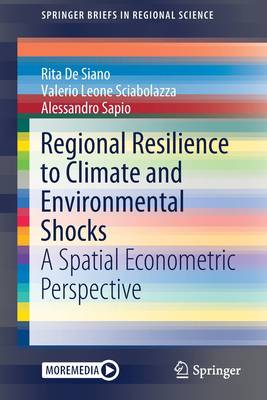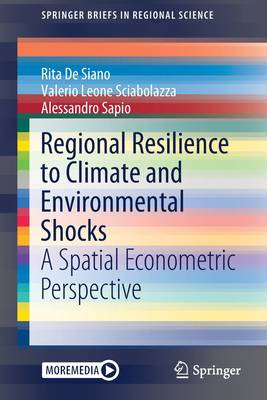
- Afhalen na 1 uur in een winkel met voorraad
- Gratis thuislevering in België vanaf € 30
- Ruim aanbod met 7 miljoen producten
- Afhalen na 1 uur in een winkel met voorraad
- Gratis thuislevering in België vanaf € 30
- Ruim aanbod met 7 miljoen producten
Zoeken
Regional Resilience to Climate and Environmental Shocks
A Spatial Econometric Perspective
Rita de Siano, Valerio Leone Sciabolazza, Alessandro Sapio
€ 52,95
+ 105 punten
Omschrijving
The book illustrates the use of spatial econometric models to analyze the economic resilience of regions to climate-related shocks. Although climate change is a global externality, climate anomalies can trigger locally disruptive shocks, whose adverse effects on economic growth are transmitted through neighbouring relationships (based on geography, trade, or technological bonds). After laying out the theoretical case for spatial analysis in the study of economic resilience, the book introduces spatial econometric models, their estimation and testing procedures, as well as applications of spatial econometrics in various domains. It then reviews the current literature on the role of space in the propagation of climate shocks, and discusses how adaptation and mitigation policies can leverage spatial dependencies, with a special focus on renewable energy technologies and agricultural productivity. It appeals to scholars of regional and spatial sciences and econometrics as well as those interested in the spatial effects of climate and environmental shocks.
Specificaties
Betrokkenen
- Auteur(s):
- Uitgeverij:
Inhoud
- Aantal bladzijden:
- 114
- Taal:
- Engels
- Reeks:
Eigenschappen
- Productcode (EAN):
- 9783030545871
- Verschijningsdatum:
- 2/10/2020
- Uitvoering:
- Paperback
- Formaat:
- Trade paperback (VS)
- Afmetingen:
- 156 mm x 234 mm
- Gewicht:
- 185 g

Alleen bij Standaard Boekhandel
+ 105 punten op je klantenkaart van Standaard Boekhandel
Beoordelingen
We publiceren alleen reviews die voldoen aan de voorwaarden voor reviews. Bekijk onze voorwaarden voor reviews.











